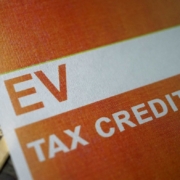ARE YOU MISSING OUT ON THE RESEARCH CREDIT?
The Internal Revenue Code (Sec 41) provides a tax credit of up to 20% of qualified expenditures for businesses that develop, design or improve products, processes, techniques, formulas or software and similar activities. The credit has been available off and on since 1981 and has never been made permanent by Congress. It has been extended several times and is currently scheduled to expire at the end of 2013, but may be extended for 2014. Please contact this office to see if Congress has extended or made permanent this credit past 2013.
The credit is calculated on the basis of increases in research activities and expenditures. Its purpose is to reward businesses that pursue innovation by continually increasing investment. Even so, an alternative simplified method allows taxpayers to claim research credits if research costs remain the same or even decline when compared with prior years.
The two methods used to compute the credit are the regular method that provides for the 20% credit, or the simplified method which is easier to document but results in reduced credit amounts.
- Regular Method – Under the regular research credit method, the credit equals 20% of qualified research expenditures for a tax year over a base amount established by the taxpayer in 1984–1988 or by another method for companies that started up subsequently. This method may be best for companies that can document a low base amount.
- Simplified Method – The alternative simplified method credit equals 14% of qualified research expenses over 50% of the average annual qualified research expenses in the three immediately preceding tax years. If the taxpayer has no qualified research expenses in any of the three preceding tax years, the alternative simplified method credit may be 6% of the tax year’s qualified research expenses. This method may be the best choice for taxpayers with incomplete records from the mid-1980s, those complicated by mergers and acquisitions, or taxpayers with a high base amount from that period.
Qualified Research – The term “qualified research” means research which is undertaken for the purpose of discovering information which is technological in nature, and the application of which is intended to be useful in the development of a new or improved business component of the taxpayer, and relates to:
- A new or improved function,
- Performance, or
- Reliability or quality.
Certain purposes that are not qualified include style, taste, cosmetic, or seasonal design factors. The definition is relatively broad and encompasses such activities as:
- Developing new or improved products, processes or formulas;
- Developing prototypes or models;
- Developing or applying for patents;
- Certification testing;
- Developing new technology;
- Environmental testing;
- Developing or improving software technologies;
- Building or improving manufacturing facilities; and
- Streamlining internal processes.
Qualifying Research Expenditures – Generally, expenses that qualify for the credit include in-house wages and supplies attributable to the qualified research; computer time-sharing costs; 65% of contract research expenses (paid to outside contractors in the U.S. who are conducting qualified research on the taxpayer’s behalf); and supplies directly used in the conduct of the qualified research.
Note: Alternately, research and experimental expenses may be deducted or capitalized under Sec 174 on the Internal Revenue Code. However, a taxpayer must elect either to deduct or amortize (not less than 60 months) such expenses OR claim the credit for them – he or she may not do both!
Limitations – The R&D credit is also subject to limitations of the general business credit. Its total and others included in the general business credit are limited to 25% of the taxpayer’s net tax liability over $25,000. To the extent that a research credit is not available for use in the current year or immediate prior year, unused credits have a 20-year carry forward.
If you have questions related to this credit or need assistance in developing the base amounts needed to compute this credit, please give this office a call.








Leave a Reply
Want to join the discussion?Feel free to contribute!